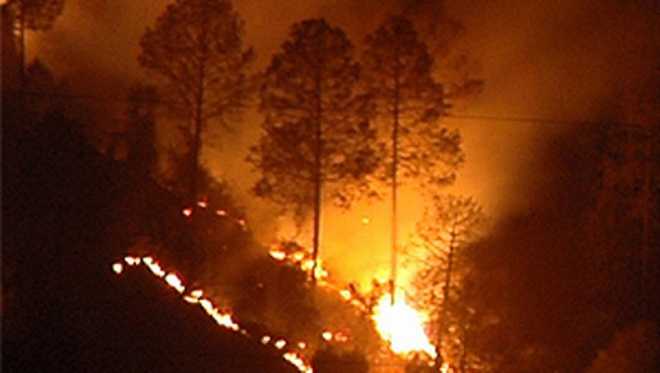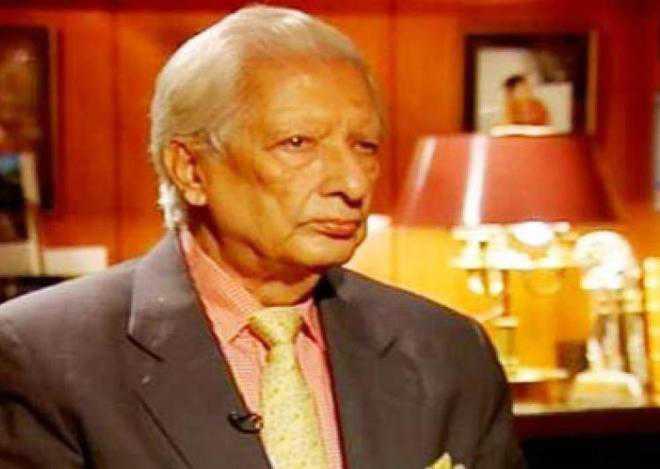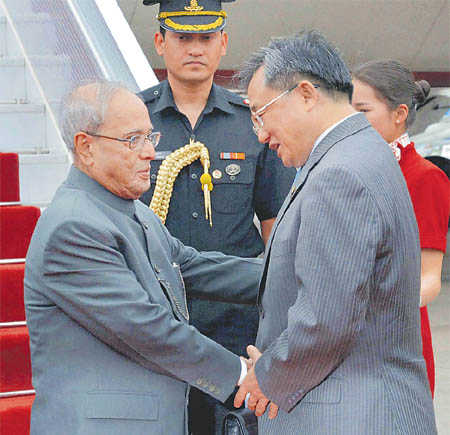ATOMIC AMBITION Delhi’s recent N-capable missile test puts pressure on Islamabad
ISLAMABAD: India’s moves towards “second strike capability” in its nuclear programme would compel Pakistan to follow suit, an official of Pakistan’s Strategic Plans Division has said, according to reports.
“Development of second strike capability (by India) … would put pressure on Pakistan to take remedial measures and develop its own version of the capability,” said the official from SPD, which serves as the secretariat of the country’s National Command Authority, Dawn newspaper reported on Sunday.
The reported successful testing of nuclear-capable K-4 SubmarineLaunched Ballistic Missiles (SLBMs) last month from its nuclear-powered INS Arihant has taken India closer to what is described as “second-strike capability” in nuclear deterrence. It refers to the capability of a military to hit back at an enemy in a situation where its land-based nuclear arsenal had been neutralised.
The Pakistani official was speaking at a round-table discussion on ‘Growing Challenges to Strategic Stability in South Asia,’ organised by the Centre for International Strategic Studies (CISS), the paper reported.
Speakers at the CISS roundtable discussion say that the reported SLBM tests by India will impact the delicate strategic balance of the region, it said.
Following the test, a statement issued by Pakistan’s foreign office had said: “The reported Indian tests of a Submarine Launched Ballistic Missile and development of a nuclear submarine fleet are serious developments, which impact the delicate strategic balance of the region. It has resulted in the nuclearisation of the Indian Ocean.”
Suggesting that Pakistan could have already moved in that direction, the SPD official recalled that Islamabad had set up its Naval Strategic Force Command (NSFC) in 2012. At the time of the commissioning of NSFC headquarters, the Inter-Services Public Relations had said it “will perform a pivotal role in development and employment of the Naval Strategic Force. The Force, which is the custodian of the nation’s second strike capability, will strengthen Pakistan’s policy of Credible Minimum Deterrence and ensure regional stability”.
Former defence secretary, retired Lt Gen Naeem Khalid Lodhi, had claimed last year that Pakistan possessed second strike capability against India. However, defence analysts had questioned the claim, saying that Pakistan was yet to achieve submarine-based ‘assured second strike capability for stable deterrence.
The SPD official, speaking about India’s development of antiballistic missiles, said it could give its military planners “false sense of security” while contemplating military action against Pakistan.
He said up-gradation of military hardware by India for operationalising the Cold Start Doctrine, building a variety of nuclear capable missiles ranging from tactical weapons to intercontinental ballistic missiles, enabling of its nuclear triad, acquisition and up-gradation of aircraft carrier fleet and nuclear submarines were all worrisome developments that would destabilise the nuclear stability, Dawn reported.
Alongside these, the official said, India was also “disturbing sub-conventional stability” by shifting Pakistan military’s orientation from external to internal security challenges by using its intelligence agencies.










































































